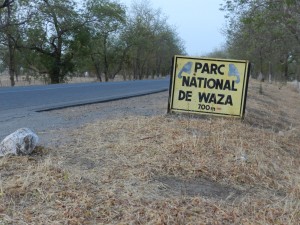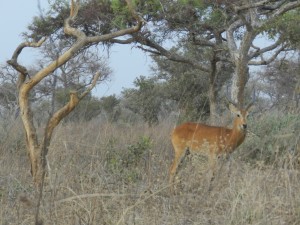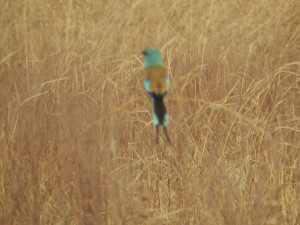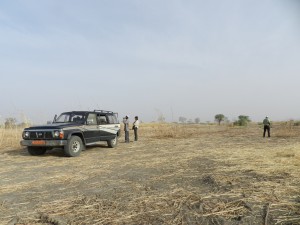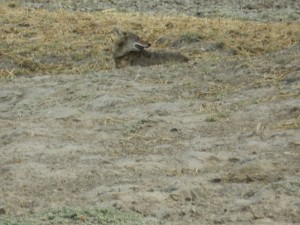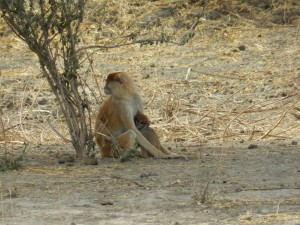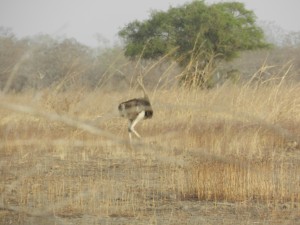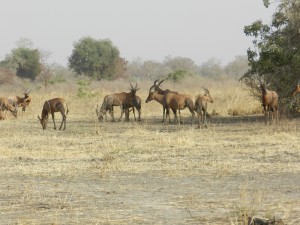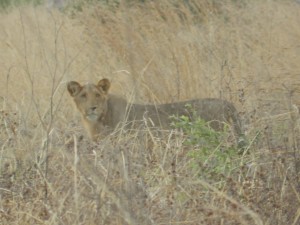One of the most-glaring seeming contradictions with regards to your average modern-American (especially of the Western U.S. variety) self-propelled outdoor recreationist is that, while we might be able to sniff the air to plus-or-minus ascertain whether precipitation is imminent, and while we may be able to, with a little luck, find our way through an area that two years ago was devastated by wildfire, when it comes to sussing out the ways of wildlife, most of us are decidedly lacking in even most rudimentary ability.
“Pathfinder” most backpackers, backcountry skiers, climbers and mountain bikers are not.
It oft-times chagrins those of us who adorn ourselves with garments manufactured by The North Face and Royal Robbins that “sportsmen” — hunters and fisherpeople — are significantly more capable than are backpackers, backcountry skiers, climbers and mountain bikers when it comes to locating wildlife. We may hike into a place known to harbor elk or bears, but, for most of us, any interface that might result comes by way of pure happenstance. This is especially frustrating for those of us who would gladly trade a long-winded view of Yosemite Falls for a fleeting glimpse of a mountain lion. But it is what it is.
Gay and I flew into the sub-Saharan town of Maroua (accent, like most towns in Cameroon’s Extreme Nord province, on the first syllable: MAR-oo-ah). For the first time in our lives, we had hired guides, sight unseen, via the Internet, prior to our arrival. There was no give and take on this decision. Our destination was the famed Waza National Park, one of the most-impressive and remote wildlife-viewing destinations in all of West Africa. Since it is illegal to enter the park without a vehicle and without a guide, we had little choice but to shell out hard-earned cash for the services of a driver, a young Muslim named Moussa, a guide named Marga (the brother of the man who owned and operated the tour company) and, more importantly, a vehicle, a 4WD SUV that was apparently Nissan’s equivalent of a Toyota LandCruiser. (The specific model was something like “RhinoBuster,” a model I had never before seen on the streets of relatively rhino free New Mexico.) I, an ex-LandCruiser owner, was hoping for and actual ’Cruiser, so we could feel like we were participating in a National Geographic documentary. I mean, who travels through the hinterlands of Africa in a fucking Nissan?
After seeing to last-minute supply-procurement details in Maroua, Moussa pointed us northward toward Waza, two delightfully bone-jarring hours away. It was during this sweltering introduction into local climatic reality that we learned that Moussa spoke nary a syllable of English and that what little English Marga spoke was lost in a linguistically unidentifiable accent so thick that we came away from every conversation more befuddled than if he had never parted his lips.
By the time we got to Waza, daylight was fading fast. Through much effort, we were able to ascertain that Marga was asking us if we wanted to enter the park, which officially closed to visitation at dusk, for a quick visit, or did we want to just journey forth to our hotel and hit the park first thing in the mañana? Fuck yeah, we wanted to visit the park right then and there!
We stopped at the entry station and picked up the legally required ranger and tracker. That made for six people crammed into the RhinoBuster, which could not have been caked any more with dust if a backhoe had unleashed a torrent of fill dirt into the interior.
In the part of the world I call home — southwest New Mexico — we are assuredly dealing with what local meteorologists are calling a “drought.” And, relativity notwithstanding, things are indeed parched in Gila Country. But, anytime you overlay the word “drought” with the word “Sahara,” you know you are entering a realm of scorching aridity that sets its own standard. This part of Cameroon was topographically featureless. Dust devils defined the horizon. All along our route, colorfully attired women walked great distances with pots atop their heads to the one moist-ish puddle for 50 miles, where they would sit and squeeze a thimblefuls of dirty moisture from the ooze, before returning to their thatched village several on-foot hours away. It was at least 105 degrees. And, until we arrived at the protected gates of Waza, vegetation was sparse in the extreme.
Though I could not understand their discourse, I could tell that the driver, the guide, the ranger and the tracker were all concerned. It did not take a linguistic scholar to understand that, given the desiccated nature of the surrounding terrain, they were worried that the wildlife viewing might be disappointing, a reality that would surely effect our remunerative largesse once post-trip tip time rolled around.
Waza National Park, according to the literature, is home to beaucoup quantities of giraffes, elephants, rhinos and lions. The entire elephant and rhino populations had apparently migrated out of the park for wetter environs, which was disappointing in the extreme, we having just journeyed halfway around the planet to see they unaccommodating asses and all.
But, we were told (or at least I think we were told), there were still plenty of giraffes and, if we were lucky, lions.
Several times, the tracker asked that the RhinoBuster be stopped. He would egress the vehicle, and just like on the silver screen, he would squat and eyeball the ground, running his fingers through the dirt, while frequently scouring the horizon. He exchanged much chitchat with his countrymen, all of whom seemed, if one can judge such things by eyeballing physical features and attire, to be from very different ethnic groups. I could not venture a wild guess what languages they were speaking, but none were French, Cameroon’s lingua franca. It seemed like they were each speaking their own language and they each was understanding what was being said — which meant these folks were at a minimum penta-lingual. I mean, it was like the bar scene in “Star Wars.”
And I’m sitting there thinking what every well-fed American would be thinking: That the tracker is not only seeing, but feeling — through his fingers, through his very skin pores, through a form of osmosis I could never in a million years even perceive, much less share — the story of the land and what has transpired here. He’s not just looking at hoof prints; he is able to discern that, four days ago, a warthog passed by and it stopped to scratch its ass because a horsefly had just bit it, and, three hours, four minutes and 56 seconds after the warthog scratched its ass, an ostrich walked by in the other direction, while, far overhead, a vulture circled. And so on. I envied this man’s solid connection to his native territory and lamented, not for the first time, how far removed we well-fed Americans are from our own environment. Most of us can’t tell the difference between our own dog’s paw print and our own boot print.
The tracker, the driver, the ranger and the guide all jabbered, nodded their heads knowingly and scoured the horizon some more. The tracker picked up some duff and tossed it lightly into the evening breeze. It did not dawn on me until later that these four men might very well have been talking about soccer or nookie or how much ransom they might receive if they sold the two Americans to the Islamic jihadists across the border in Nigeria. The tracker might have been squatting there looking at the withered terra firma beneath his feet and telling his compadres that, fuck, he had no idea where the goddamned wildlife was. He might have been a recent graduate of whatever school of method acting it is that every tracker character that has appeared in every movie and TV show that required the services of faux members of this particular vocation attended.
This I came to suspect at least partially because, while the jabbering was transpiring and while the duff was being tossed and while the horizon was being scoured, I looked over to my right and, not 50 yards away, stood still as stone two full-grown giraffes, staring warily directly at us. When I pointed the two giraffes out to the rest of our entourage, Marga, clearly somewhat mortified that first critter contact was made by the flabby, sweat-soaked gringo, gestured toward the tracker and, if I waded my way through our communicative difficulties accurately, effused unabashedly about the finely honed skills displayed by our tracker, whose facial expression seemed to be hovering somewhere between “Where did those goddamned giraffes come from?” and “Hey, there are two giraffes standing right there!”

Due to the well-honed tracking skills of our tracker, we managed to find these two giraffes standing close to our vehicle.
We drove around for an hour or so, during which time we viewed numerous more giraffes, as well as some sorts of exotic ungulates, some monkeys, a slew of very cool birds (we learned later that this area is one of the main bird-watching areas on the planet), including a family of ostriches, a jackal and a warthog. Then, suddenly, out of the blue, lying right there in the middle of a rutted dirt track, was a pride of five lions, which we followed for 10 minutes before impending darkness forced us to leave. Something about not wanting to get eaten alive.
I could be wrong, but it did not seem to me that the tracker had anything whatsoever to do with the fact that we came upon a pride of lions. I believe it was just our good fortune. Which is totally cool. Nothing whatsoever wrong with a bit of happenstance. We thanked the tracker profusely and tipped him generously, thinking, if nothing else, that those method-acting classes likely had set him back a bit.



